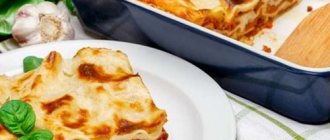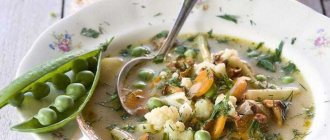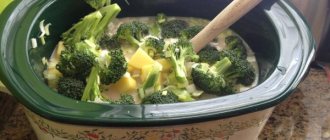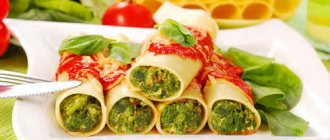What are the benefits of goat milk cheese?
A dish with goat's milk cheese will be lower in calories than a dish made with cow's milk product. This is the main advantage of making goat cheeses. Calorie content per 100 grams of product without additives – 300 k.k. per 100 grams. However, the cost of goat milk is higher, which is quite justified. What are the benefits of a natural product for the human body:
- Making cheese from goat's milk is recommended for those who play sports, recover from injuries, or those whose bodies are still growing. This is a source of calcium that will help strengthen the skeletal system. A sufficient amount of the element in the composition helps prevent bone tissue destruction. Therefore, older people are also recommended to eat real cheeses often.
- There are recipes that produce a product with only 291 calories per 100 grams. Therefore, goat cheeses are suitable for those who watch their caloric intake.
- This homemade natural product can be consumed by people with lactose intolerance and gastrointestinal problems.
- Goat cheeses do not contain large amounts of cholesterol. Therefore, their use is a good prevention of atherosclerosis.
- Just a piece of fermented milk product a day helps to cope with menstrual pain and disorders of the vaginal microflora, including the growth of candida.
- For men, the cheese product is also useful - it helps in the prevention of inflammation of the genitourinary system.
- A product made from milk given by a goat is considered hypoallergenic.
Important! It is strongly recommended not to consume cheeses for people who suffer from gastritis or stomach ulcers.
Description of goat cheese
The product made from goat's milk is much more tender and flavorful than from cow's milk. It contains more vitamins and beneficial microelements. Because a goat is an animal that doesn’t eat everything. She is very picky when it comes to food.
If you run a goat farm according to the rules, then the goats and goats are placed in different rooms. The smell that is so characteristic of these animals is produced by hormones from being at a short distance from each other. We will not talk about cleanliness and the basic rules of milking: it is clear that they must be strictly followed. The processing of milk into dairy products must also comply with sanitary standards.
Cheese is made from any milk. But for the first time they began to cook it from goat meat. We learned cheese making a long time ago. Every nation has its own national recipes.
Earlier we talked about Belebey cheeses.
Composition of goat cheese
The quality of any cheese product is affected by the animal's diet. The higher the quality of the goat's food, the more nutritious the cheese will be. During cooking, spices are added and prepared in different ways - the product turns out very tasty and healthy.
Goat cheese has low cholesterol, low calorie content and better digestibility than cow's milk products.
If we take the composition, then there is more protein, retinol, vitamin B 2 and phosphorus in the goat product. The nutritional value of 100 grams of cheese is approximately 290 kcal.
It’s not for nothing that in the not-so-distant past small children were raised on goat’s milk. It is much healthier for the body. And the cost of goat's milk is always higher than cow's milk. Not because the goat has less of it. Because it's better quality.
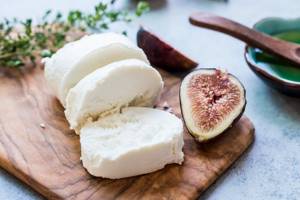
Types of goat cheeses
Goat milk cheeses are made soft and hard. It would take a very long time to list the entire list of varieties: each country has its own, of course, the best for its citizens.
Take, for example, the famous soft French ones:
- Saint Maur, made in the province of Turin, specially rolled in ash, having a salty lemon flavor;
- Chevre, freshly prepared, has a soft consistency, becoming sharp, with a tart aftertaste as it ages;
- Crottin de Chavignolles is made in round heads and has a specific aroma of goat, complemented by the taste of nuts and fruits;
- Chabishu du Poiteau - it has a bluish crust with mold, a taste of goat's milk and a taste of spices.
And from the hard varieties, you can make a brief analysis of the products of cheese makers from Spain:
- Garrocha from Catalonia is a hard cheese, aged for 30 days, with a sharp taste, a moldy rind of a bluish-gray color;
- Carrefour goat's milk blue cheese;
- Caprillice aged goat milk product.
How can we not mention the brown cheese deliciousness from Norway: Gudbrandsdalen or Brunost. Very reminiscent of boiled condensed milk. Only slightly salted, because it is made from whey, heavy cream and goat milk. The product is national, every second person eats it for breakfast.

Cooking recipes
Homemade goat cheese, the recipe for which can be found on the Internet, can be spicy, hard, soft, porous, melted. There are simple methods that require readily available ingredients. But sometimes it takes weeks to prepare, and housewives need to buy it in cheese-making stores. However, the result is worth the effort. It is worth considering all options for preparing fermented milk products.
Easy way
It is recommended to start getting acquainted with cheese making with a simple method. The delicious cheese prepared according to this recipe can be added to pies or pizza, or eaten in its pure form.
Ingredients:
- milk – 4 l.;
- vinegar – 8 tbsp;
- salt, cumin - to taste.
How to make homemade goat cheese:
- Skim off the cream.
- Heat the main ingredient over medium heat.
- After boiling, reduce the heat. Add vinegar.
- Stir the contents of the container.
- As soon as the mass thickens, strain it using gauze.
- Remove the dry mass and knead like dough.
- Place the future cheese on the fire; it should stand until it melts.
- Remove the mixture and leave to cool. Slice. You can prepare the product immediately with cumin, or add it later. If you want to preserve the cheese flavor, then no additives are needed.
Soft cheese
You can make cheese at home that will melt in your mouth. If the production technology is followed, a very delicate product is obtained. A step-by-step and clear recipe will help with this.
Ingredients:
- milk – 1 liter;
- cottage cheese – 1 kg;
- butter – 100 g;
- salt;
- egg – 1 pc.
Goat cheese recipe:
- Bring the main product to a boil.
- Add cottage cheese, stir for 5 minutes.
- After coagulation, strain the mixture and leave it to hang in gauze for a day.
- Mix egg, salt, oil. Place in a water bath. Mix with the clot and put under a press.
For those who have established home production and have a full hand, it is easy to understand the degree of readiness of the product. Usually this is at least a day.
Solid product
It is difficult to cook cheese at home that will replicate the taste of a store-bought product. But you can make hard cheese that will resemble the usual Russian one.
What you need for hard cheese:
- goat milk – 4 l;
- sour milk – 2 l;
- egg – 6 pcs.;
- salt.
How to cook simply:
- Add eggs to sour milk. Stir.
- Add salt to fresh milk, heat, stirring. Pour in the fermented milk mixture.
- Cook until clots appear. Strain everything through cheesecloth to separate the curd mass.
- Place the mass under the press.
Processed cheese
Making a melted product at home is also possible. What is needed for this:
- milk – 0.6 l;
- cottage cheese – 0.6 kg;
- salt and soda - 1 tsp each;
- vinegar – 1 tsp;
- egg – 1 pc.;
- butter – 70 g.
How to melt at home:
- Boil the main ingredient.
- Add cottage cheese and boil for 5 minutes. Strain.
- Add salt and soda with vinegar.
- Beat in the egg and soft butter.
- Mix. Leave to simmer over low heat for 15 minutes, stirring. You need to melt it very slowly.
- Leave the processed fermented milk product to cool.
Brynza
Another homemade goat cheese, the recipe for which is simple, is feta cheese. What you need for cooking:
- milk – 3 l;
- vinegar – 1 tbsp;
- salt – 1 tbsp.
How to cook:
- Bring the main ingredient to a boil.
- Add vinegar and salt.
- Bring to a boil, wait for the mixture to curdle.
- Strain the mixture and leave the whey for baking.
- Form a head and leave the cheesecloth with goat cheese in the refrigerator.
According to this recipe, the cheese will not have a very pronounced taste. You can add salt and other spices to find your perfect match.
Porous cheese
This recipe can be used to prepare a delicious porous product. What you need for the recipe:
- milk – 1.2 l;
- cottage cheese – 500 g;
- eggs – 2 pcs.;
- salt – 5 g;
- soda – 5 g.
How to do:
- Bring milk to a boil.
- Add cottage cheese, cook over low heat.
- Discard the formed flakes.
- Strain with gauze.
- Add eggs, salt, soda to the cottage cheese. Mix the mass.
- Place the mass in gauze under pressure.
- Leave for a day.
Greek dairy product with enzyme starter
Homemade goat cheese with pepsin turns out more similar to the usual store-bought products.
What you need for the recipes:
- milk – 10 l;
- pepsin – 0.2 g;
- water – 100 ml.
How to cook:
- Bring water to a boil and cool. Dilute the enzyme in it.
- Heat the main ingredient to 35 degrees. Pour the solution into it and stir for 5 minutes.
- Wait half an hour. Get a clot. Divide it into squares using a knife.
- Heat the milk again to a temperature of 39 degrees.
- Stir every 30 minutes. After a couple of hours, the desired consistency begins to form.
- Transfer the mixture to cheesecloth and add salt. Suspend for as long as necessary for drainage.
- Place the mixture in a mold under a press for a day.
Spicy cheese
Once it becomes clear how to make goat cheese at home, you can experiment. You can add your favorite spices to any recipe and get a fragrant product. This could be cumin, nutmeg, cinnamon, peppers and other spices. You can use your imagination in this direction.
Recipe 2. How to make homemade goat cheese - French Crottin, with white mold
For this recipe, it is better to purchase the ingredients in advance at specialized points of sale in order to get cheese that best matches the original taste.
Compound:
- Homemade goat milk 4 l
- Rennet, liquid 0.6 g
- Calcium chloride (solution) 2 ml
- Geotrichum Candidum mold (powder) 0.2 g
- Sourdough, mesophilic 1.5 g
Preparation:
Attention: use only sterile containers and wear gloves.
Cake pans can be used to make small heads. They need to be treated with alcohol and placed on a drainage mat, which, in turn, is placed on a grid with a tray. To ripen the cheese, you will also need a container with a lid and a wire rack installed inside, as well as napkins, which will need to be changed during the ripening period of the cheese (14 days).
Heat the milk to 25°C and add the mold and starter, stir gently until the powders dissolve. Then add rennet and calcium chloride solution. Stir again and leave, covered, until a thick clot forms, for 17-20 hours. Cover the lid loosely to allow air to enter. The curd should settle to the bottom of the dish and become covered with a layer of whey. Collect the whey from the surface and begin placing the curd into the prepared pans. The entire curd will not fit at once, so you need to wait until it thickens as a result of the remaining whey draining, and continue to spread the curd mass - please note that it is designed for 10 forms, and making smaller heads is not recommended.
Cover the cheese in the molds with a sterile cloth for two days. After 24 hours, turn the molds over, leaving them still on the drainage mat. The cheese will continue to press for another day under its own weight. Then remove the molds and sprinkle it with salt. After three days, transfer the cheese to a container for ripening. The further preparation process consists of caring for the cheese for two weeks - during this time it will achieve the required organoleptic characteristics. Store the container at 8-10°C, do not close it tightly, change the napkins every day. If steam appears on the lid of the container, wipe it with a sterile cloth to prevent condensation from dripping onto the cheese.
Requirements for the quality of cheese: a white wrinkled crust should appear on the surface. The appearance of blue mold indicates high humidity during the ripening period. The crust should also not crack, which indicates too low humidity.
Store the finished cheese in a separate container, wrapped in parchment, at 5°C for up to 1.5 months.
Pasteurization and cheese making
It must be prepared from processed and carefully prepared ingredients. This rule especially applies to any milk. All dairy products quickly deteriorate if preparation and storage conditions are not followed.
Pasteurization is the disinfection of milk, which helps extend its shelf life. The essence of the process is heating to a certain temperature. The technology first began to be used in the 19th century. Pasteurization can be long-term or instantaneous. There is ultra-pasteurization - heating to a temperature of more than 100 degrees. At home, it is recommended to process milk for a long time.
The problem is that pasteurized milk is not 100% guaranteed to produce cheese. Therefore, it is recommended to use a homemade product. And it, in turn, contains unfriendly bacteria, which can only be gotten rid of by heating.
Home cheese makers must have a kitchen thermometer, since milk must be heated to a certain temperature. With long-term pasteurization it is 65 degrees. These indicators are maintained for half an hour, constantly stirring the milk. After heating, cool the contents of the pan as quickly as possible.
Important! You should not overheat the milk, as the cheese will not turn out or it will be tasteless.
How to store the finished product at home
Homemade goat's milk cheese must be stored properly so that it remains healthy and tasty for a long time. It is not recommended to cut in advance. This will cause the pieces to become weathered, and the cheese in the cling film will stop “breathing” and spoil. The product should be wrapped in cling paper and placed in a plastic bag to preserve for a long time. All fermented milk products are kept at low temperatures so that they do not lose their beneficial properties. It is recommended to allocate space for cheese on the middle shelves of the refrigerator, but not on the door. Home cheese makers can be given a ceramic or glass cheese maker. It maintains normal storage temperature and humidity of 90%.
Important! The ideal conditions in which cheese can be stored are 5-10 degrees, 80-90% humidity.
Spicy foods should be kept under a tight lid. Instead of a container, you can take foil or film. The opened cheese is kept in the refrigerator for a maximum of several hours before serving. Outside the refrigerator at home, the product is stored only in a salty solution in a cool, dark place.
Melted product recipe
The cheese turns out to be quite pliable and has a delicate consistency.
Ingredients:
- milk - 600 ml;
- goat cottage cheese - 600 g;
- butter - 70 g;
- egg - 1 pc.;
- salt - 0.5 tsp;
- soda - 0.5 tsp;
- vinegar - 0.5 tsp.
Preparation:
- Boil the milk. While stirring, add cottage cheese.
- Boil for 5 minutes.
- Drain the liquid.
- Put salt, soda, quenched with vinegar, butter, egg.
- Boil for 20 minutes.
- Place it in the refrigerator.
Watch the video for the sequence of actions:
Useful tips
Homemade cheese making has been developing for decades, and each master had his own secrets. Some of them have been revealed and help even novice cheese makers make delicious fermented milk dishes. Things to remember:
- In a regular saucepan, the ingredients will burn, so it is recommended to purchase a cheese pan.
- Storage is allowed for no more than 2 weeks.
- Serve the slices only at room temperature for better flavor development.
- The milk must be fresh.
- It is recommended to allocate separate containers for preparing cheeses.
If the cheese does not resemble a famous French or Italian cow or other product, then do not despair. At home in our country, only Russian goat cheese can be prepared. This is easily explained by the characteristics of the ingredients, since the grass that goats eat significantly affects the taste of the finished product. Even at the industrial level, Russia produces tasty, but far from French goat cheeses.
Goat milk produces healthy hypoallergenic and dietary cheese. At home, you can make a delicate, soft, porous, hard and melted product. Manufacturing technologies are not much different. However, small nuances significantly affect the final consistency, calorie content and taste.
